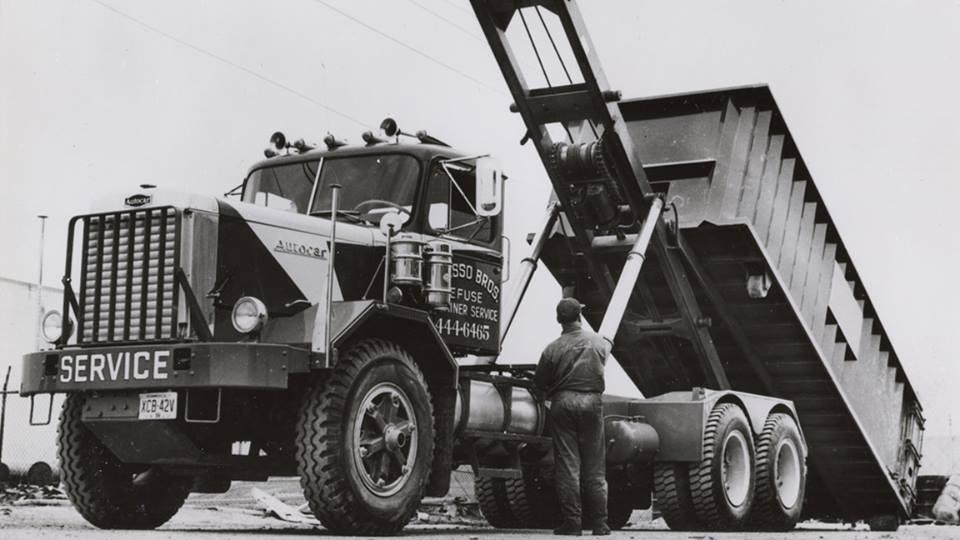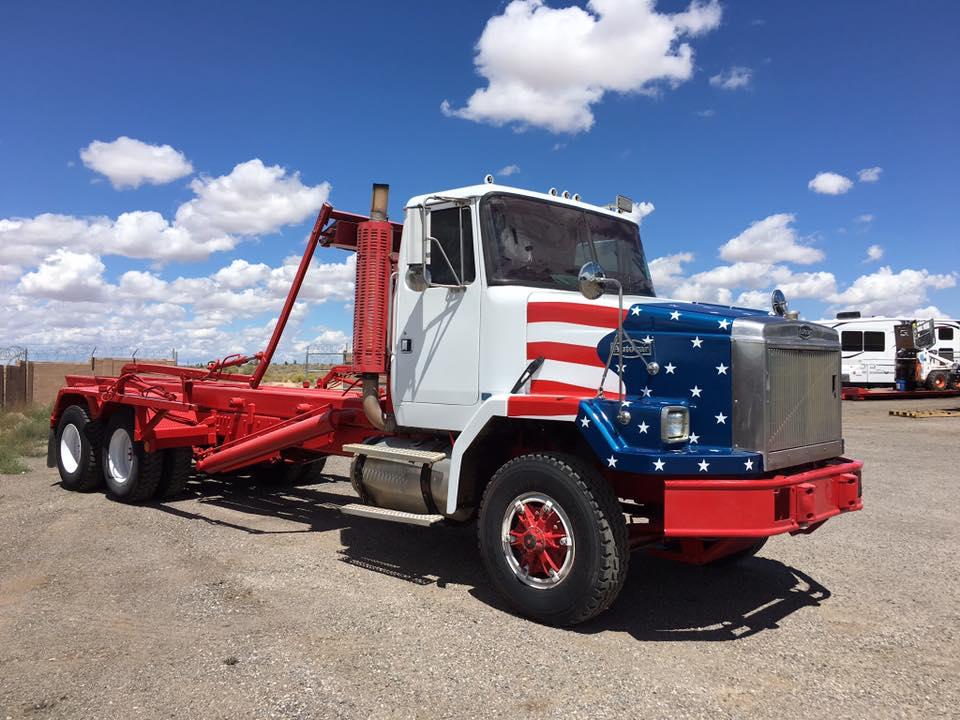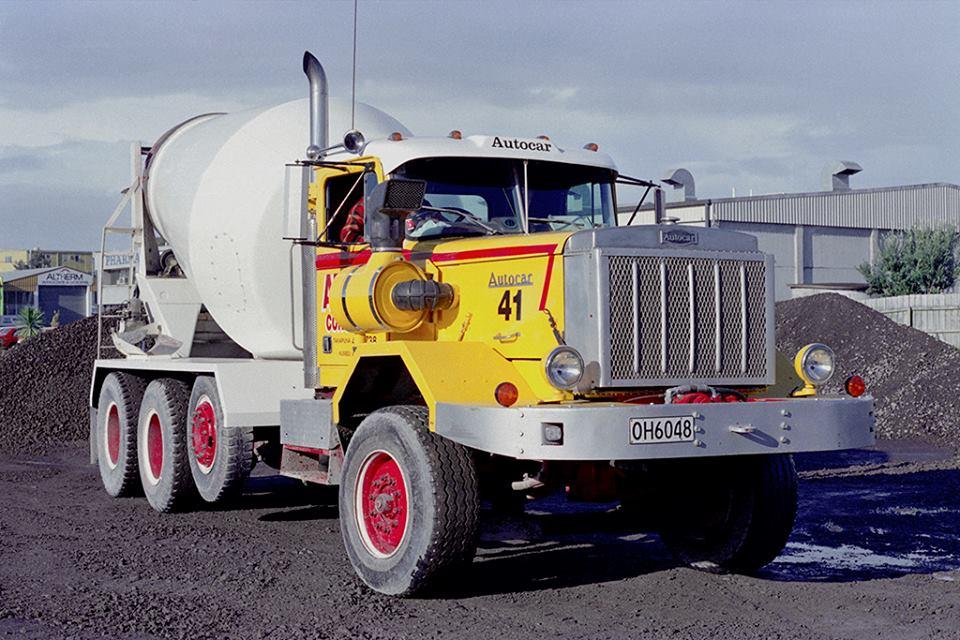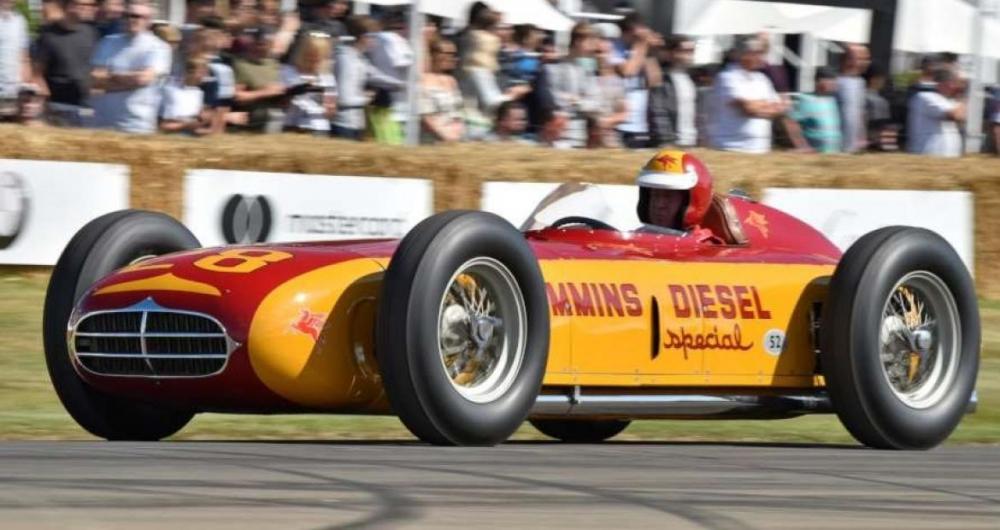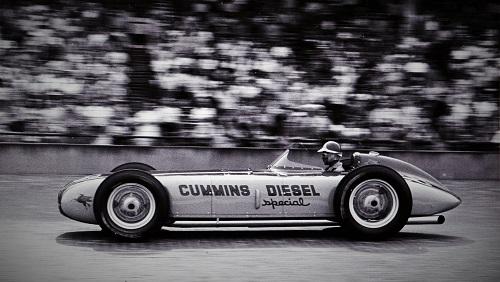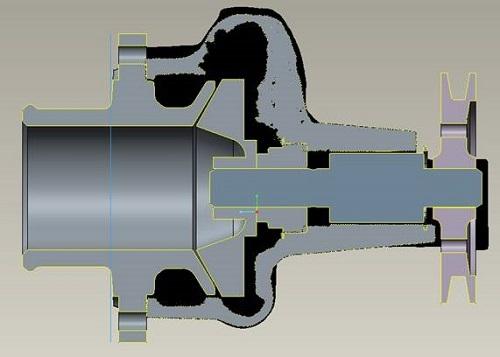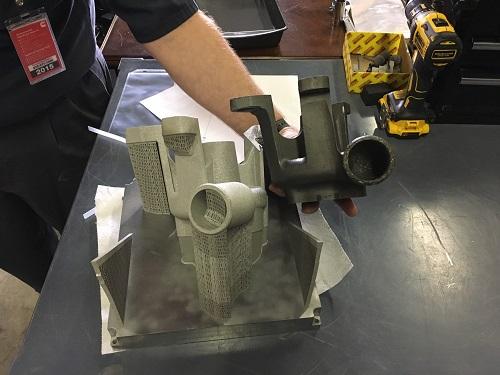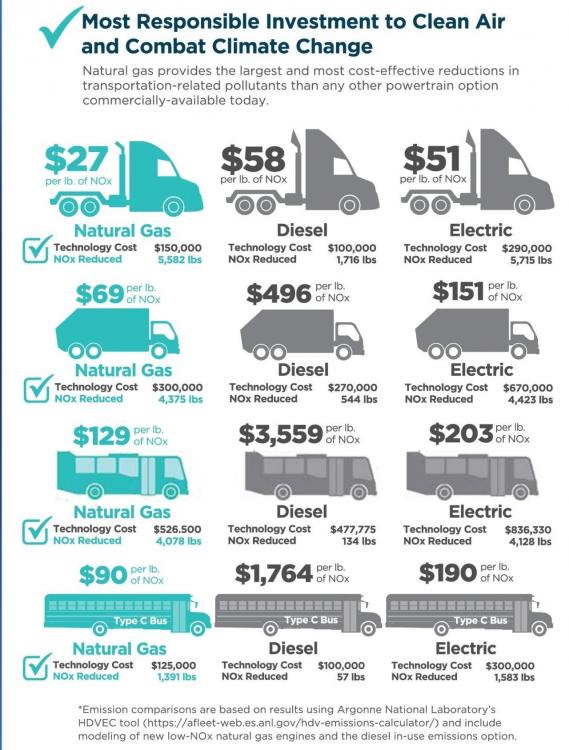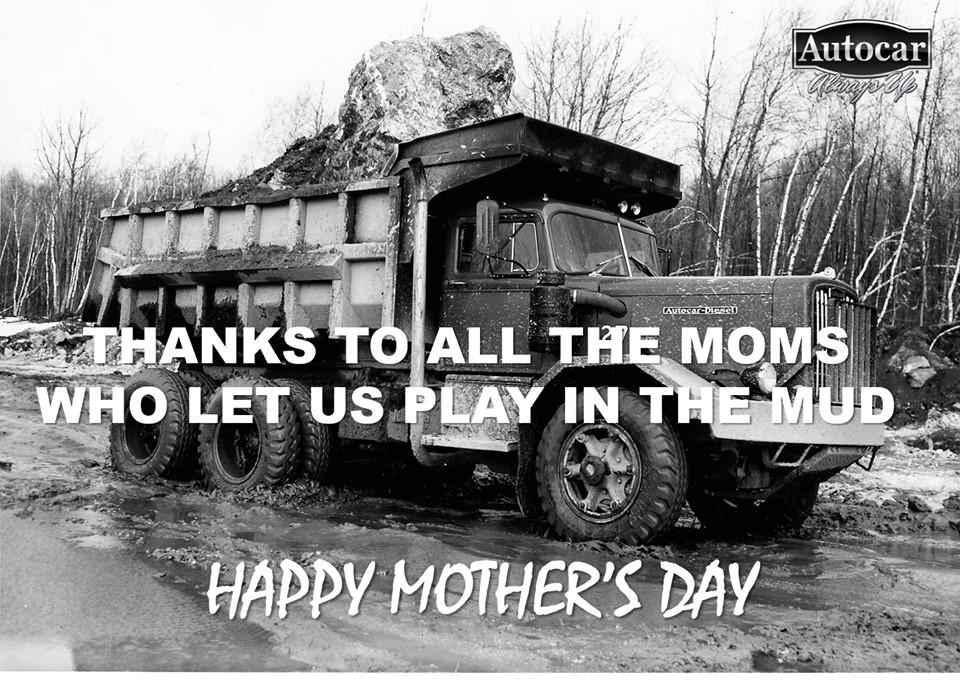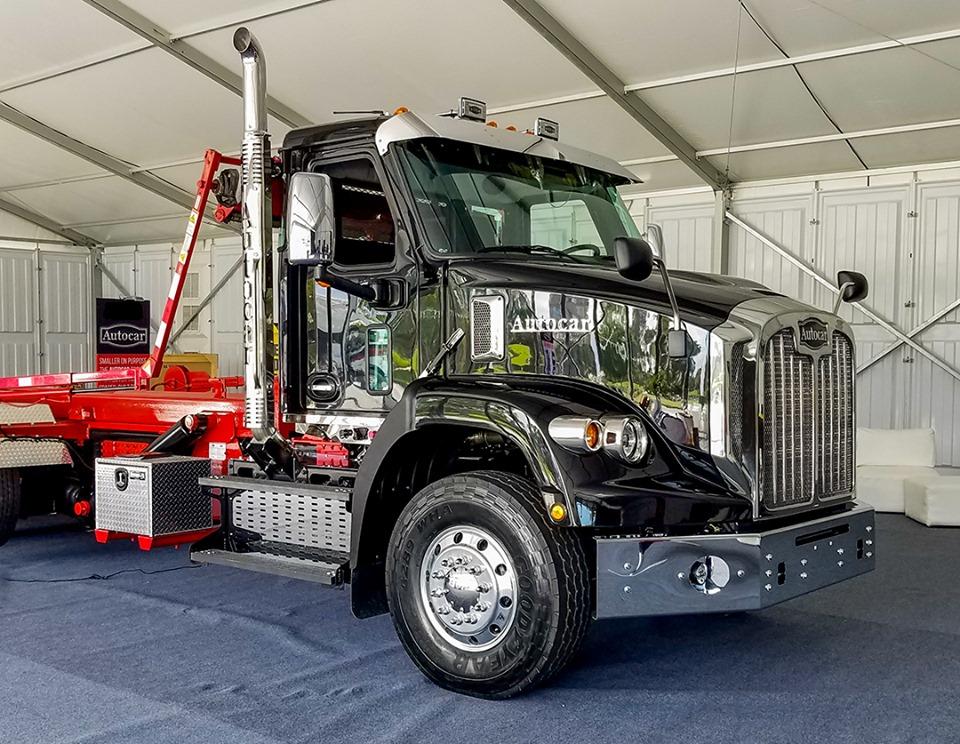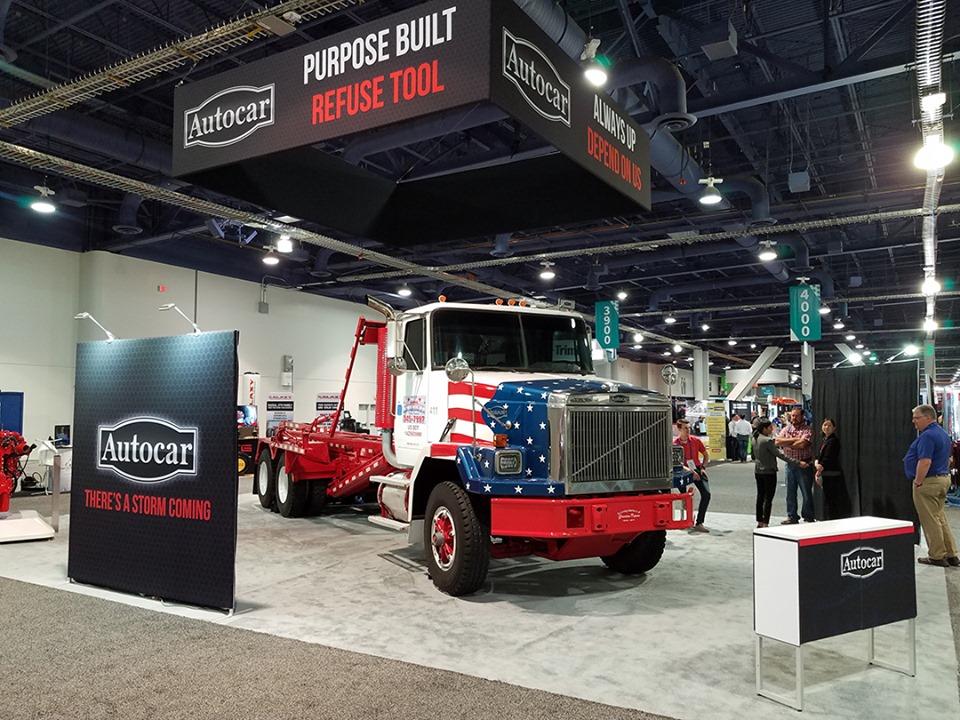
kscarbel2
Moderator-
Posts
18,932 -
Joined
-
Days Won
114
Content Type
Profiles
Forums
Gallery
Events
Blogs
BMT Wiki
Collections
Store
Everything posted by kscarbel2
-
-
Autocar Trucks / April 13, 2019 The Capone family of All American Waste in New Mexico runs this 1990 #Autocar ACLB rolloff truck. At 29 years old she gets as much work done as ever and, of course, she’s a still a beauty. But maybe it’s time for a #BadtotheBone new one? # AlwaysUp #RollOff .
-
Autocar Trucks / April 17, 2019 Autocar #concrete #mixers have roamed the ends of the earth. Just like this classic transit mixer down in New Zealand, shared by Ed Mansell. No cookie-cutter truck here: Look underneath and - like every Autocar - it will be custom-engineered for its specific tough job. #AlwaysUp. .
-
Volvo Trucks Press Release / May 9, 2019 Our new safety function Distance Alert makes it easier for drivers to maintain a safer distance from the vehicle in front by alerting them when they get too close. It’s designed to prevent collisions – in particular trailer back accidents – and is yet another step towards our vision of zero accidents. .
-
Scania Group Press Release / May 8, 2019 The town of Åhus in southern Sweden is home to the Absolut Company, the maker of a world-famous brand of vodka. Founded in 1879, it is, like Scania, a prominent part of Sweden’s industrial heritage. The two companies also share a strong commitment to sustainability. In Åhus, you can also view Scania’s extremely limited P 320 hybrid-electric truck. Sighted, but barely heard, since the technology makes it silent. But the black cab is hard to miss when used by local haulage company Åhus Åkeri to transport Absolut’s renowned product in a white trailer with Absolut’s unmistakable logotype in blue. Climate first for hybrid owner The hybrid can operate ten kilometres on electricity with a total weight of 32 tonnes. It makes the truck a rare example of a fully sustainable solution, something proud owner Andreas Jönsson at Åhus Åkeri is well aware of. For him, efficiency and functionality come first. With the hybrid and his fleet of biodiesel trucks, the haulage company fulfils the high demands Absolut has on its suppliers by being sustainable in its business operations. Absolut produces 120 million bottles each year. It’s Jönsson and his drivers job to transport pallets of vodka from Absolut’s factory to their warehouses many times each day. And the truck never leaves with an empty load, bringing used pallets back to the factory on its return trip. “I’ve bought this hybrid because we put the climate action first and we’d like to be at the forefront. It’s an improvement in emissions, but also a way to reduce the noise level when driving on city streets,” Jönsson says. Local transport for local products It comes as no surprise that Åhus Åkeri is recognised for its work and dedication to quality, environment, and safety & health. Jönsson’s business continuously decreases emissions and with that engagement, he seeks to be a role model for the industry. But it’s also essential for retaining the Absolut assignment. “We are a local company, transporting local products. From the fields of wheat to the glass in the bottle, everything can be traced back to its origin,” says Jönsson, who feels that if we could visualise emissions people might better understand what is happening to our planet. Absolut commitment Absolut works hard to minimise its impact on the climate, involving suppliers such as Åhus Åkeri. Peter Neiderud, Director Supply Chain, Quality and Environment at Absolut says: “Our distillation process is climate neutral. Now we’re working on transport to and from our facilities.” In 2018, the company celebrated reaching its 2020 goal two years ahead of plan. The goal was to ensure that 80 per cent of its ingoing transport are fossil-free. Now, the focus is on continuing to be as efficient and climate friendly as possible. Efficiency and climate friendly are also concepts that resonate well with Jönsson. “It would be impossible to invest in new trucks in 2028 and be climate neutral already by 2030. It takes so much more advance planning and a strong will to make a difference.” What kind of environmental impact the new hybrid will have on the overall emissions for Åhus Åkeri is too soon to tell. Both Absolut and Jönsson will monitor how well the hybrid is doing, the same way his drivers receive a monthly score on their overall performance. No matter what happens, Jönsson will keep raising the bar. “This hybrid is one step closer to a fossil-free future.” Facts The Absolut Company was founded by Lars Olsson Smith in 1879. Quality and great terms for employees are values that still hold true today. The distillation process is extremely sustainable, and the bi-product feeds more than 250,000 pigs every day. To learn more, click here. The hybrid is a Scania P 320. – It runs 10 kilometres with a total weight of 32 tonnes. – It can carry a load of 14 tonnes. – It also runs on the renewable biodiesel HVO100. .
-
MAN Truck & Bus Press Release / May 9, 2019 The transport service FAN Courier processes more than 180.000 parcels every day. This amount can only be managed with the help of a reliable, perfectly equipped truck fleet. Together with MAN Truck & Bus, FAN Courier designed a special truck which is based on their needs – from the turning angle of the wheel to aerodynamic elements: The MAN fleet fully meets their daily demands! .
-
MAN Truck & Bus Press Release / May 8, 2019 The system lane departure warning (LGS) is combined with a lane return assistant (LRA). While the LGS warns the driver when leaving the lane, the LRA steers the vehicle back into the lane by actively intervening. .
-
MAN Truck & Bus Press Release / May 8, 2019 Adaptive Cruise Control (ACC) automatically controls the speed of the vehicle and its distance from vehicles ahead on the road. Up to a speed of 25 km/h, the stop & go function is used for automatically moving forward in heavy traffic, traffic jams or urban traffic. The truck autonomously brakes behind the vehicle in front, up to a complete stop, and then starts driving again automatically. .
-
MAN Truck & Bus Press Release / May 8, 2019 The Lane Guard System is a camera-based driver assistance system that warns drivers if they accidentally cross the lane markings and thus helps them to remain in lane on well-maintained roads. .
-
DAF Trucks Press Release / May 9, 2019 Meet Swedish brothers Jan and Leif. Back in 1982 they started their transport company, Jale. This is their story about running a family business in snowy, rural Sweden. #DAFaroundtheworld .
-
The yellow-painted grab handles are a nice touch, particularly in vocational applications like refuse. That should be optional industry-wide. (It's all the good little things that add up to something great).
-
Volvo Trucks North America (VTNA) Press Release / May 13, 2019 . .
-
Volvo Trucks North America (VTNA) Press Release / May 13, 2019 .
-
Peterbilt Motors Press Release / May 13, 2019 Vocational Marketing Manager, Tony Sablar, walks us through the trucks on display in the 2019 Peterbilt WasteExpo booth. .
-
Blair Claflin, Cummins / May 9, 2019 The No. 28 Cummins Diesel Special was the technology wonder of its day. More than six decades later, high technology is helping get the record-setting race car back on the track that made it famous. Cummins engineers, using 3D printing and computerized tomography scanning, created a new water pump for the car, which will return to the Indianapolis Motor Speedway later this month after setting a one-lap track record of 139 miles per hour in qualifying for the pole position in the 1952 race. “Without 3D printing, we would not have gotten this project done in the time frame that we had to do it,” said John Rupp, Advanced Manufacturing Technical Advisor at the Cummins Technical Center in Columbus, Indiana (U.S.). BUILDING A FASTER RACE CAR To commemorate Cummins’ 100th anniversary, the 2019 Indianapolis 500 will include a parade lap featuring the five company-engineered cars that participated in previous races, the first in 1931 and the last, the No. 28 car, in 1952. Cummins’ founder Clessie Cummins occasionally used the 500 to demonstrate and promote the virtues of his company’s engines. By 1952, he had left company, but the goal was essentially the same. Taking advantage of rules allowing for larger diesel engines, a crew of Cummins’ engineers and technicians used a modified truck engine in the No. 28 car, with the first turbocharger ever used at the track. Some parts were milled from aluminum or magnesium to reduce weight. The team used a wind-tunnel to design a more aerodynamic car body. An air of secrecy surrounded the effort in the days before the 1952 race and many interpreted that silence to mean the car was a flop. Imagine the surprise when the Cummins Diesel Special captured the pole with a four-lap average of 138 miles per hour, and set the single lap record. It would complete 70 laps (175 miles) in the race that year before retiring with a clogged turbocharger caused by rubber debris on the track. MAKING OLD NEW AGAIN Over the years, some parts on the No. 28 car didn’t age particularly well, according to Greg Haines, an Off-Highway Design & Development Leader at the company and a member of the Cummins History & Restoration Team. The team worked to get the Cummins cars running again for the anniversary. The water pump, one of the custom parts made of magnesium to reduce weight, was especially concerning. Haines said it was pitted all the way through in one place and very thin in others. To make matters more challenging, no plans for the pump could be found to make a replacement. It was around this time that the Cummins Diesel Special was invited to participate in the 2017 Goodwood Festival of Speed, which describes itself as “motorsport's ultimate summer garden party.” The hill-climb in West Sussex, England, features modern and historic racing vehicles, and draws big crowds of devoted fans. The Cummins Diesel Special participated in the event in the late 1990s but sat for many years after. It would never make it without a new pump. Suddenly the clock was ticking again for No. 28. There wasn’t time to make a new part using traditional sand casting methods, so the Cummins team turned to 3D printing. The company had been studying the technology for use in manufacturing for several years, Rupp said, but it had not yet purchased any printers capable of creating metal objects one ultra-thin layer at a time. Building a new pump was a great chance to tackle a problem facing the company when it comes to aftermarket parts for older engine models. “A real problem we face in the aftermarket space is finding a supplier willing to manufacture a 40-year-old design that was once a high-volume part to fill an order for two or three parts economically,” said Brett Boas, Director of Advanced Manufacturing at the Cummins Technical Center in Columbus. “The tooling to make the casting just no longer exists. Additive technology solves this problem.” Cummins worked with 3rd Dimension Industrial 3D, an additive manufacturing company in Indianapolis. The old pump was scanned to “reverse engineer” its unique features and create a digital file for the 3D printer to use. In less than a week, the new part was printed and ready to go and No. 28 was off to Goodwood. A RARE FIND IN THE BASEMENT The History & Restoration Team is using the same techniques to restore a rare Model F diesel engine found in the basement of the Cummins’ Corporate Office Building, partially disassembled and missing parts. Considerably older than the Cummins Diesel Special, the Model F engine was produced from 1924 to 1931 to power lighthouses, industrial shovels and other uses. Cummins engineers are reverse engineering any missing parts and using 3D printing. They hope to have the engine running by the company’s anniversary celebration in June. “The 3D scanning, reverse engineering, and advanced manufacturing technology that are available today are helping to make these projects possible,” Haines said. “This is an excellent example of using modern technology to restore our historic artifacts.” .
-
NVGAmerica / May 8, 2019 (The 200-member national trade association for the U.S. natural gas vehicle industry.) https://www.ngvamerica.org/ .
-
- 1
-

-
-
"The new Autocar DC cab: 1) It's 100% new, 100% Autocar. 2) It's made in America from galvanized steel and a touch of aluminum for strength+weight optimization, tested for severe-duty beatings. 3) Inspired by the classic Autocar Driver Cab with wraparound glass and tons of operator space. 4) The dash has a steel structure and aluminum panels with exposed fasteners for serviceability. 5) Inside, more authentic custom metals, less plastics. 6) 100% #BadtotheBone #AutocarDC #AlwaysUp" .
-
"Now that we revealed the new #Autocar #DC-64R purpose-built conventional refuse truck, the wraps are off the truck we had hidden as a teaser in our WasteExpo booth. It's the 1990 Autocar ACL64B rolloff graciously loaned by All American Waste in New Mexico. Thanks to Carmine Capone and his family for sharing our celebrations of the new #AutocarDC. #AlwaysUp" .
-
Volkswagen gives ok to taking its truck unit public Jason Cannon, Commercial Carrier Journal (CCJ) / May 13, 2019 Volkswagen AG said on Monday it plans a summertime initial public offering (IPO) of its Traton truck unit. The German automaker just two months ago scuttled IPO plans for Traton – formerly Volkswagen Truck & Bus and the umbrella company for MAN, Scania, Volkswagen Caminhões e Ônibus and RIO – citing poor market conditions. Held back by build slots that have been filled since 2018, U.S. Class 8 truck orders have been below 20,000 units every month this year. Class 8 orders for the past 12 months now total 380,000 units, according to FTR. Traton’s supervisory board and board of management on Monday each okayed preparation for an IPO, putting the cash-raising plans back on track “subject to further market developments,” the company said Monday in a statement – a maneuver that could raise upwards of $6.75 billion dollars. Traton currently owns a nearly 17 percent stake in International Trucks’ parent company Navistar, and Wall Street has long speculated that a Traton IPO is a possible precursor to a richer investment in, if not the outright acquisition of, the Lisle, Ill. truck maker. Traders responded in-kind Monday. Despite losing as much as $2.23 per share earlier in the day, Navistar stock prices closed up nearly 3 percent after the Traton news broke.
-
That makes no sense. Bob? Once assumes they sold the HN80 tooling to Daimler. If they leased it, such a deal would be unheard of. They might still own the Louisville tooling, but.............
-
White House economic adviser Larry Kudlow admits that it is American businesses that pay the tariffs on any goods brought in from China, and that US consumers also foot the bill if companies pass on the cost increase. https://www.youtube.com/watch?time_continue=686&v=5C9PG8KwXwE
BigMackTrucks.com
BigMackTrucks.com is a support forum for antique, classic and modern Mack Trucks! The forum is owned and maintained by Watt's Truck Center, Inc. an independent, full service Mack dealer. The forums are not affiliated with Mack Trucks, Inc.
Our Vendors and Advertisers
Thank you for your support!


